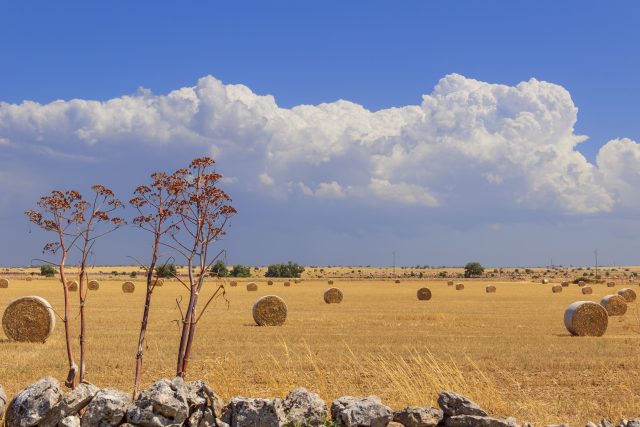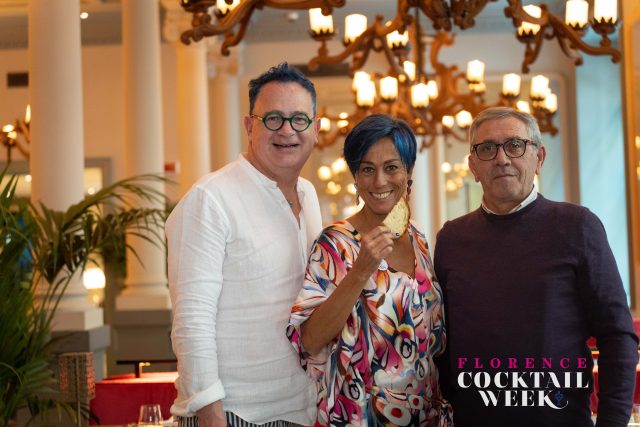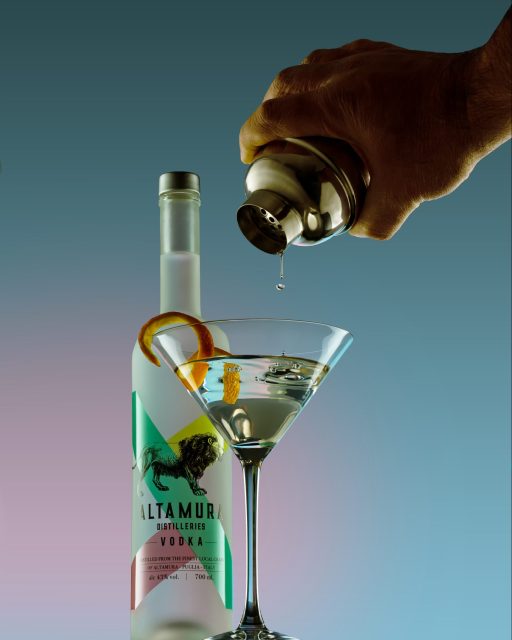This website uses cookies so that we can provide you with the best user experience possible. Cookie information is stored in your browser and performs functions such as recognising you when you return to our website and helping our team to understand which sections of the website you find most interesting and useful.
Altamura Distilleries goes with the grain to make Pugliese vodka
db speaks to Altamura Distilleries managing director Frank Grillo to discover how the brand is utilising Puglia’s ancient wheat varieties to create vodka, Italian style.

Despite his Sicilian heritage and sharing a surname with one of the island’s best-known grape varieties, US-born Grillo is blazing a trail for spirits, rather than wine, in Puglia, rather than Sicily. When asked how he ended up in the heel of the Apennine Penisula, Grillo said: “By accident! When we were looking where to move in Italy, we knew we wanted to head somewhere south. We looked at airport access and good food, and Puglia flies to the top pretty quickly when it comes to that, so even though we’d never been here, we said ‘let’s go’.”
Puglia is already renowned for the quality of its bread, and no meal in the region is complete without a healthy portion of crusty carbohydrates, perhaps accompanied by a generous glass of Primitivo and plenty of locally-produced olive oil. Pane di Altamura, made from wheat sourced from Alta Murgia National Park in the province of Foggia, has the rare distinction of being the only PDO-certified bread in the world. Local wheat varieties such as Appulo, Arcangelo, Duilio and Simeto are known for their hardiness and complexity of flavour.
It was the quality of the bread that convinced Grillo that Pugliese wheat also had the potential to be transformed into something stronger: “We were going for expressing the flavour and the terroir of the wheat, we weren’t looking to be a taste neutral, pure-alcohol vodka. I don’t say that in a disparaging way, there are purposes for those. The original thought about Altamura Vodka was if you boiled a loaf of bread, you could drink it rather than eat it, so the mission was to let people experience Altamura in a liquid format, rather than a dry one.”
Altamura Distilleries has sourced its wheat through the godfather of grain, Andrea Cappiello. The third generation to farm the fields of Altamura, Cappiello’s instinctive knowledge of his crop, accumulated over decades of hard graft, gave him the confidence to participate in the project: “If you can make the best bread in the world, you can make the best vodka.”

At present, the spirit is actually distilled in Poland, not Puglia. Grillo explained: “Right now, we contract a column still in Poland. Here [in Puglia] we’re going to first build out the gin distillery and then the vodka distillery. We didn’t know what reception the product was going to get, so we’ve started with a contract distiller to get set up. We ship all the wheat from Altamura to Poland and then ship the vodka back to Italy.”
Much like Goldilocks’ porridge, the secret to distillation is finding what’s ‘just right’: “When we did our tastings, we were choosing between distilling it two, three or five times. Five was too much because it stripped out everything, and though two was tasty, it wasn’t as smooth as we would have liked. So, it’s triple distilled and filtered five times through active charcoal.”
“The Italians use the word ‘morbida’ to describe cheese, and it means somewhere between smooth and creamy – it describes our vodka too, especially when it’s chilled, it’s got a really nice finish to it,” he explained.
Grillo is certainly not the only one to be charmed by Puglia, with the region becoming a highly popular tourist destination.
“The benefit to us of what is going on here in Puglia is the ability to broadcast that we exist to people outside of Puglia, outside of Italy,” Grillo said. “You’ve got so many visitors here from all over the world. We were sitting here [in the town of Ostuni] earlier and we could hear accents from Belgium, Holland, Germany, the UK and the US – Puglia really magnifies us. People come here to experience the region, experience the vodka as part of their vacation, and then take that memory home.”
As for the international markets Altamura Vodka is currently available in, he said: “We’re in India and the UK, and about to be in the US. The good thing about vodka is it is the ‘little black cocktail dress’ of spirits. It is consumed almost everywhere and can be easily adopted.”
“Brand Italy sells really well in Asia,” Grillo pointed out. “Italian products are regarded as high quality, and given the provenance of Altamura wheat, that authenticity really helps us in markets that like Italian products.”
It might be suggested that the sanctions against Russia, and Russian vodka, in many western countries in response to the invasion of Ukraine might be advantageous for a new vodka brand looking to gain traction. However, Grillo pointed out: “We slot right against Belvedere and Grey Goose, and there isn’t really a Russian product in that category. It’s those brand that own what I like to call the ‘€15 Martini market’.”
Indeed, for Grillo, the simplicity of a “proper Martini” is the perfect way to serve the spirit: “I’m a bit of a zealot about this – a 1940s three-to-one ratio with a really great Vermouth and, in the style of the Savoy, a dash of orange bitters. It’s a beautiful experience. If someone says they don’t like Martinis, I tell them ‘you’ve never tasted a Martini, what you’ve tasted is chilled vodka!’”

Grillo also pointed out that Altamura Vodka has an umami character that works well with the olive brine of a Dirty Martini. After all, bread and olives is a classic combination.
“We’ve also seen cocktails play on the idea of bread, tomatoes and olive oil,” Grillo shared.
For this same reason, Grillo and EMEA president Steve Acuña suggested oysters, sea urchin and any raw fish dishes as food pairings with “super-chilled” vodka.
But Altamura Distilleries is not stopping with using Pugliese wheat for vodka, Grillo disclosed: “There will be two gins, a London Dry, and one more geared towards a Negroni which has a little less juniper and more burnt orange aroma so that it works with the Campari and vermouth. We will also produce what would be known in American parlance as a wheated ‘Bourbon’ and a wheated rye whiskey, though we can’t call them this, using 51% corn and 49% Altamura wheat and 51% rye and 49% Altamura wheat. Matured in charred new oak for four-to-five years. We haven’t got a name for them yet, we’ll have to come up with the ‘Méthode Traditionnelle’ of Bourbon!”

